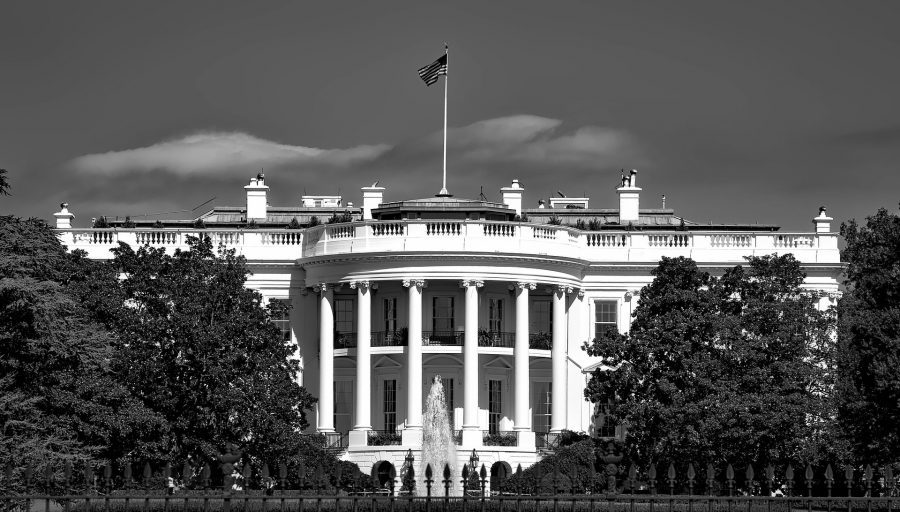Thought for the month ahead: While many Americans focus on who the Democrats might nominate for president next year, President Trump and China’s President Xi hope to conclude a trade deal. The markets are counting on it already, and they expect to avoid further tariffs on EU autos and to eventually see the lifting of all tariffs. One of the reasons President Xi has held off concluding a deal is his fear that mercurial President Trump might back out at the last minute, causing much loss of face. Of note so far, only in Washington, is that many Republican senators and congressmen are pushing the White House hard to lift all of the tariffs. That may not happen a quickly as they would like, but I do expect it to happen before next year.
Monetary Policy: The Federal Open Market Committee will conclude its two-day meeting this afternoon with a statement at 2 PM EDT and Chair Powell’s news conference at 2:30 PM. I can forward a transcript of Mr. Powell’s remarks upon request. In
Federal Deficit to hit $1 trillion. Tomorrow, the Congressional Budget Office will update its budget projections. Their Fiscal Year 2019 (ending September 30, 2019) deficit estimate will likely top $1 trillion as compared to their January estimate of $897 billion (See Table 1-1on p.7). That would be about 4.7% GDP, up from 4.2%. In my opinion, it will be a long time before the U.S. deficit declines below these levels. There’s no talk of deficit reduction on Capitol Hill. We’ll see if any emerges after the 2020 election.
China Trade Agreement: U.S. Trade Representative Bob Lighthizer and Treasury Secretary Steven Mnuchin are in Beijing to wrap up a trade agreement with China’s Vice Premier Liu He. The talks are likely to conclude in Washington next week with an announcement that China’s President Xi Jinping will visit President Trump at the White House later this month to sign the agreement.
USMCA: The U.S.-Mexico-Canada Agreement has yet to be presented to Congress because the votes are still lacking to pass it. House Speaker Nancy Pelosi (D-CA) wants additional worker protections and better enforcement language in a side agreement before she will bring it to her caucus. In a Wall Street Journal op-edlast Sunday, Senate Finance Committee Chair Chuck Grassley (R-IA) demanded the lifting of the steel and aluminum tariffs before he will forward the agreement from his committee. At this point, it looks like congressional approval is a distant hope, but that’s how all trade agreements look before they squeak through.
Government Funding: The possibility of another government shutdown on October 1, 2019 remains until Congress and the White House agree to raise the Budget Control Act spending caps, which for Fiscal Year 2020 are estimatedby the Congressional Budget Office to be $576 billion for defense and $542 billion for non-defense. Those levels are $140 billion and $79 billion respectively below actual Fiscal Year 2019 spending of $716 billion for defense and $621 billion for non-defense. The Administration wants to boost the Fiscal Year 2020 defense spending to $750 billion, running all of the increase over the cap through the exempt Overseas Contingency Operations account, and leaving the non-defense cap of $542 billion unchanged. The House Budget Committee, controlled by the Democrats, recently recommendedFiscal Year 2020 defense spending of $664 billion and non-defense spending of $631 billion. While these differences are quite large, Republicans and Democrats do not want to allow another government shutdown going into 2020 out of fear of what voters might do to all incumbents that November. I see two possible outcomes: 1) an agreement is reached within the next few weeks; or 2) another round of continuing resolutions to keep the government funded until after the November 3, 2020 election.
Debt Limit: On February 26, 2019, the Congressional Budget Office estimated“Treasury will probably run out of cash near the end of this fiscal year or early in the next one.” See this 73-page 2015 GAO reportfor details of the 2013 experience, which temporarily raised T-bill rates by about 20 basis points. I expect Congress and President Trump to agree to a debt limit increase, probably as part of a government funding bill or resolution.
2020 Election: Twenty Democrats are already campaigning hard to oppose President Trump next year. It’s way too early to speculate on whom the Democrats will nominate. Their problem is how to unify the party behind one candidate. Would Bernie supporters back Biden? Are the other Democratic candidates too liberal to attract swing voters? If the Democrats split, it could hand a second term to President Trump, who will get the votes of over a third of U.S. voters almost no matter what happens between now and then.







